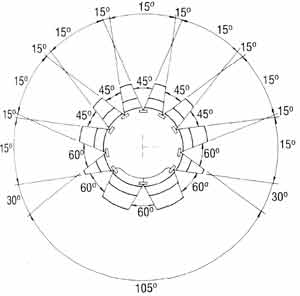| Designation: | LIRD-1 |
 |
|---|---|---|
| Manufacturer: | Fotona d.d. | |
| Product type: | Optronic Countermeasure Systems | |
| Name: | Laser warning system |
The Fotona Laser Irradiation Detector and warner (LIRD) has been designed for use in both vehicle and shipborne applications and entered production in 1986.
The purpose of the LIRD is to reduce vehicle vulnerability to the numerous laser-associated weapon threats on the modern battlefield, by providing the crew with a warning that its vehicle is being irradiated by a pulsed laser from a laser range-finder or a laser illuminator/designator. The crew can then take appropriate self-protective action (manoeuvre and/or deployment of a smoke screen) or counterfire.
The basic LIRD-1 system consists of two separate units, the detector head unit and the indicator unit and the appropriate cables and mounting units.
The detector head units consist of two detection system modules, the direct detection module and the indirect detection module.
The direct detection module senses the laser beams which directly hit the vehicle and the detector head unit. The indirect detection module senses the target-off laser beams which indirectly irradiate the instrument.
Signals from the detector head unit are routed via a signal cable to the processing circuitry in the indicator unit. Its processing circuitry starts the generators of the audible alarm and supplies the display with signals for visual identification.
The display on the indicator unit has 16 Light Emitting Diodes (LEDs) which indicate the direction of incoming irradiation and four LEDs for laser threat characterisation.
The LIRD-1A is a threat laser irradiation detector which enables automatic discharge of smoke grenades from an armoured vehicle.
This comprises the basic LIRD-1 set with a slightly modified indicator unit and the smoke grenade launcher system. The automatic smoke discharge system does not operate immediately afterthe LIRD-1 A detects the laser threat, but after a delay of a few seconds. This time delay allows the tank commander to decide whether discharging smoke grenades is the best solution in a specific situation.
The vehicle commander has the option to cancel automatic smoke grenade discharging and to decide on another course of suitable action, for example moving the vehicle behind cover.
In production. Several years ago Slovenia started a major upgrade programme on its T-55 tanks with the assistance of a number of foreign countries including Israel. This major upgrade includes the installation of a Fotona LIRD system coupled to Israeli IS-6 smoke grenade launchers (qv). The upgraded vehicle, which is now operational with Slovenia, is called the M-55 S1.
Prime contractor for this upgrade was the Combat Vehicle Systems Division of Elbit Systems Ltd of Israel with the work being carried out in Israel by Zelezarne STO RAVNE.
 |
 |
 |